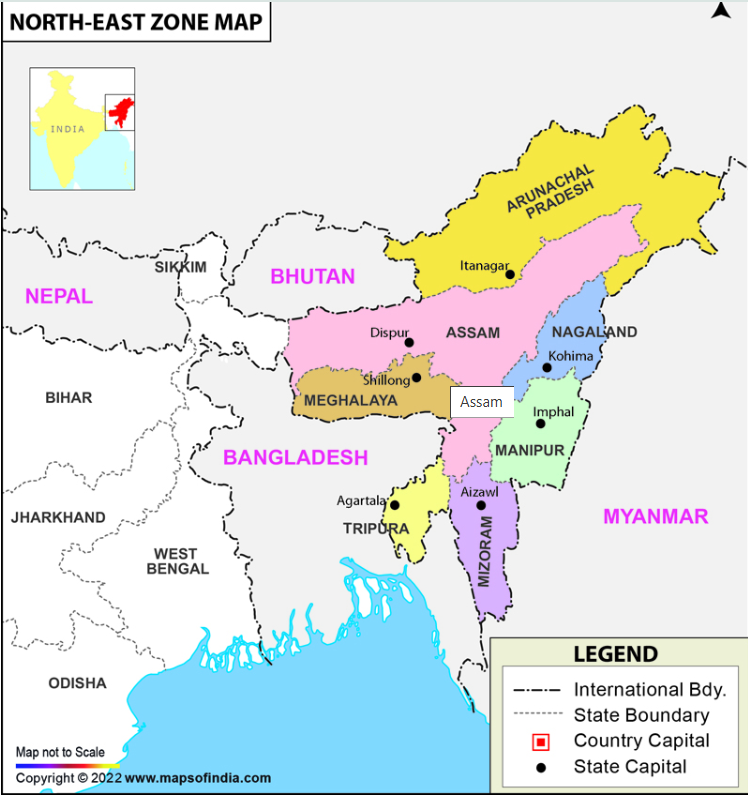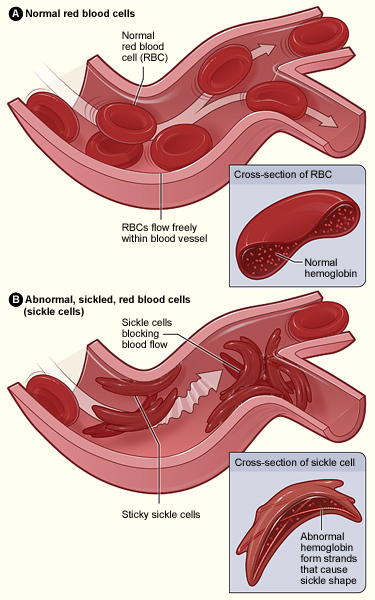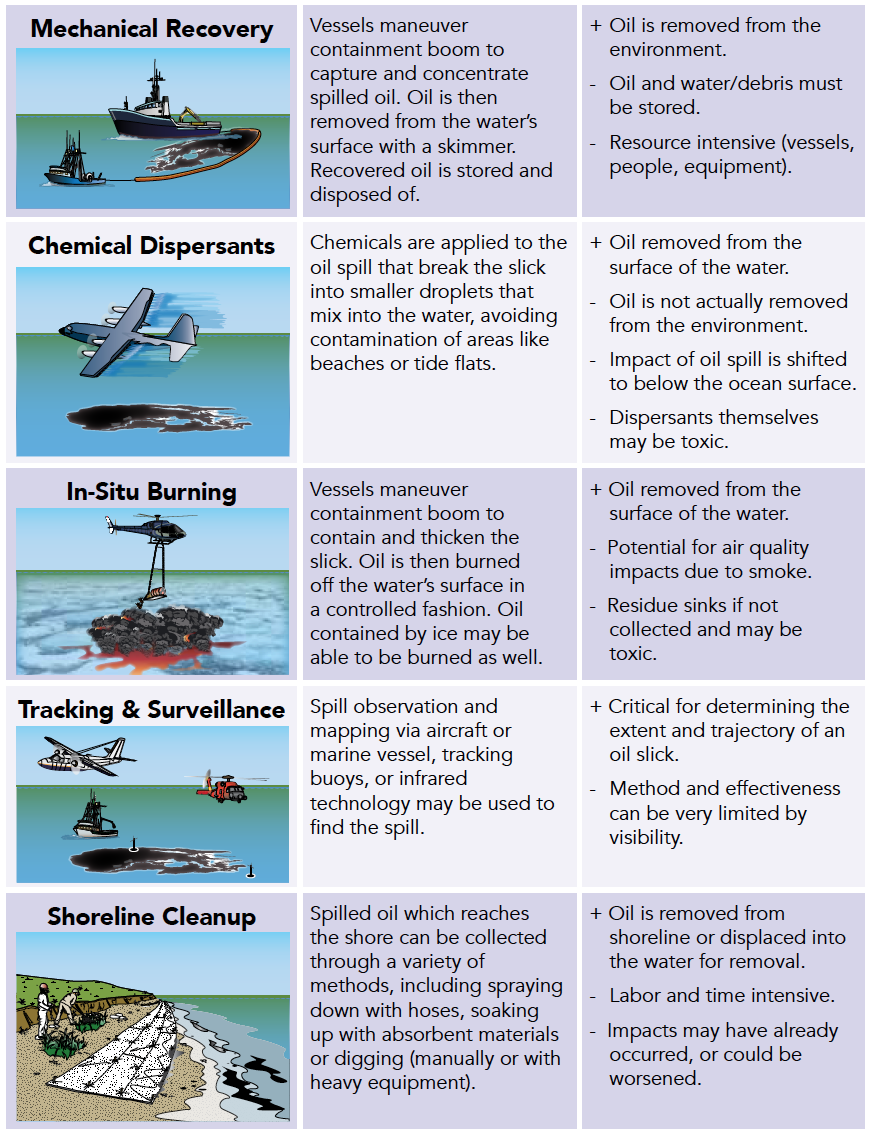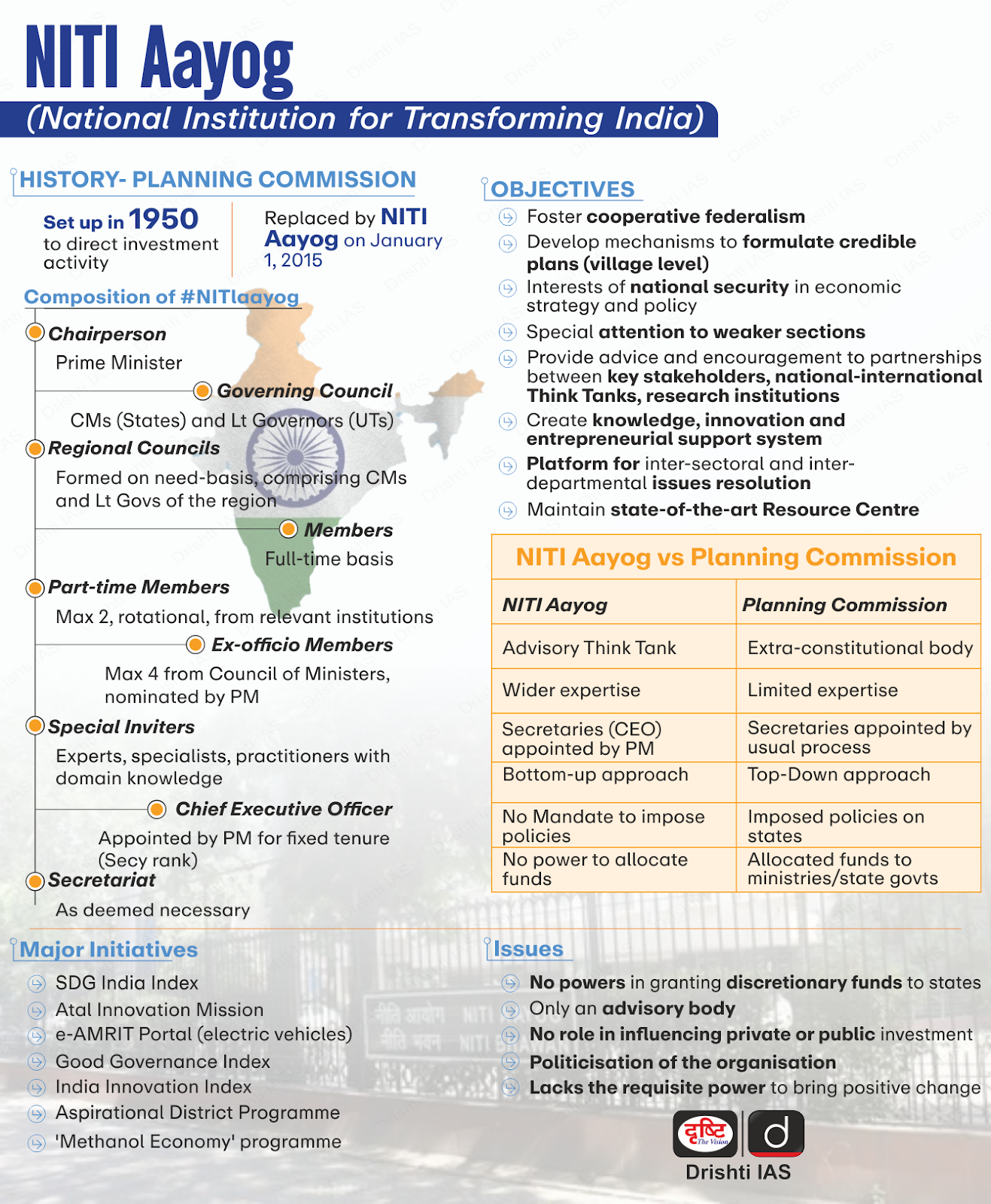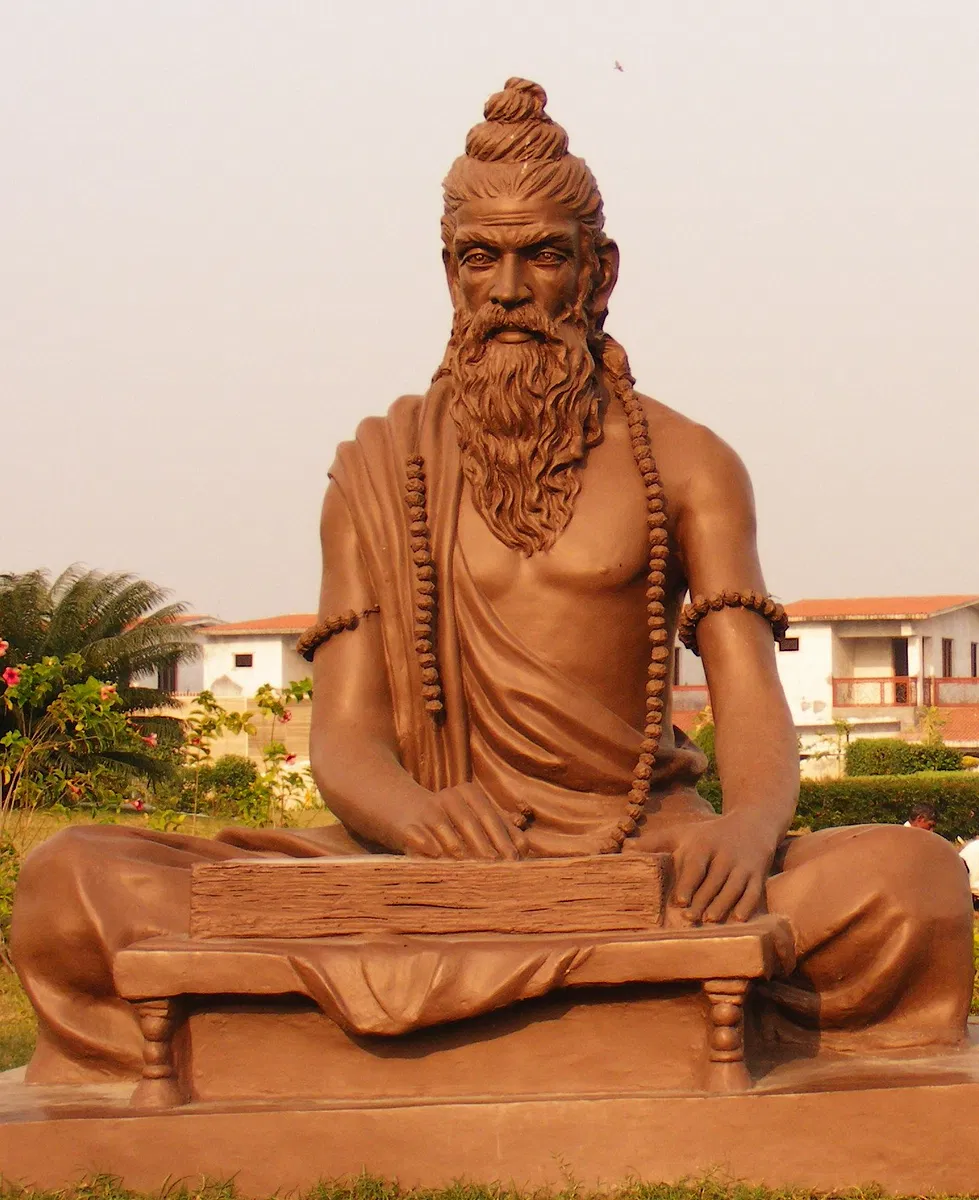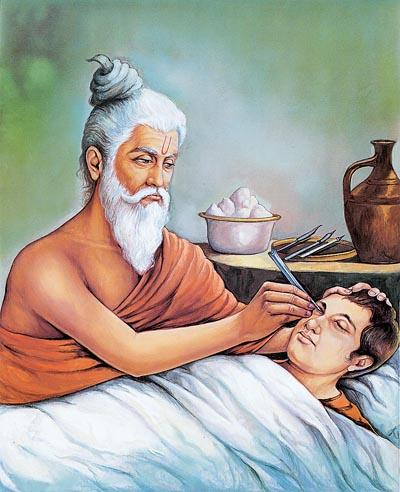Governance
Northeast India From Frontier to Frontrunner
For Prelims: Northeast region, Living root bridges, Kaziranga National Park, Inner Line Permit, PM-DevINE, Siliguri Corridor
For Mains: Act East Policy and Role of Northeast India, Border Management and National Security in Northeast
Why in News?
The Prime Minister at the “Rising Northeast: The Investor Summit” declared that the Northeast Region (NER) of India is no longer a “frontier” but a “frontrunner” in India’s growth journey. Highlighting its strategic importance and economic potential, he emphasized the region’s evolving role as a gateway for trade with Southeast Asia.
Note: The Ministry of Development of North Eastern Region (DoNER) is organizing the Rising Northeast Summit to unlock the investment and trade potential of the NER of India.
- The initiative aims to project NER as a dynamic economic corridor with strategic connectivity to ASEAN and BBN (Bangladesh, Bhutan, Nepal) countries.
- Rising North East Investors Summit 2025 drew an unprecedented Rs 4.3 lakh crore in investment interest, setting the stage for the NER to become India’s next economic powerhouse.
How is the Northeast Emerging as a ‘Frontrunner’ for India’s Growth?
- Bio-economy and Natural Resources: The NER, referred to as ‘Ashta Lakshmis’, highlights the region’s vast potential in renewable energy, agro-based industries, eco-tourism, and strategic manufacturing.
- The region’s biodiversity is being leveraged for green growth. Assam is a major hub for tea production, while Arunachal Pradesh leads in bamboo-based industries.
- The region holds 40% of India’s hydropower potential (~62,000 MW), yet only 6.9% is harnessed. Solar potential is estimated at 57,360 MW with only 17% installed capacity.
- Tourism and Human Capital Strengths: The Northeast's natural beauty and vibrant culture make it a perfect destination for eco-friendly and sustainable tourism.
- Key attractions include Meghalaya’s living root bridges, Sikkim’s eco-tourism, Kaziranga National Park, and Kamakhya Temple in Assam, and Manipur’s Loktak Lake. These sites boost local livelihoods and promote eco-friendly travel.
- Additionally, high literacy rates among NER (~80%) and a high proportion of English-speaking populations contribute to the region’s workforce readiness.
- States like Manipur and Mizoram are national leaders in sports like football, boxing, and weightlifting.
- Gateway to Southeast Asia: The Northeast is central to India's Act East Policy, serving as a bridge to ASEAN and Indo-Pacific markets.
- Projects like the India-Myanmar-Thailand Trilateral Highway and the Kaladan Multi-Modal Transit Transport Project are enhancing regional connectivity.
- Development of ports like Sittwe in Myanmar and Chittagong in Bangladesh will connect Northeast India to key Indian Ocean shipping routes, boosting India-ASEAN trade from USD 125 billion to USD 200 billion over the next decade.
- Critical to National Security: NER shares 5,484 km of borders with five countries (Myanmar, Bangladesh, Nepal, Bhutan, Tibet/China) plays a frontline role in national security.
- The Siliguri Corridor (Chicken’s Neck), is a vital strategic and economic lifeline, connecting Northeast India to the rest of the country and serving as a key transit hub for trade with Bhutan, Bangladesh, and Nepal.
- Infrastructure Push: The central government has significantly increased funding with 10% of the Ministry of Road Transport and Highways’ budget allocated to the Northeast.
- The North East Special Infrastructure Development Scheme (NESIDS), launched in 2018, has a USD 1 billion allocation for roads, water, and power.
- Projects like the Sela Tunnel in Arunachal Pradesh are improving all-weather connectivity to remote areas. New initiatives like the upcoming Semiconductor Plant in Assam mark a shift toward high-tech industrial investment.
What are the Challenges in Making Northeast India a Frontrunner?
- Historical Insurgency and Security Issues: Decades of insurgent movements (Naga, Mizo, ULFA, NDFB) created instability, affecting investment and development.
- Cross-border infiltration from Bangladesh and Myanmar has posed persistent security challenges.
- The 2023 ethnic violence in Manipur between Meiteis and Kukis highlights deep-rooted tensions and fragile inter-community relations and identity politics prevent a unified development approach.
- Fear of “outsiders” and demands for perpetuation of Inner Line Permits (ILP) create resistance to migration, investment, and entrepreneurship.
- Agricultural Distress and Employment Gaps: Although agriculture is the mainstay, the region faces serious issues like low productivity and lack of modern techniques.
- Middlemen dominance is prevalent in NER, which traps farmers in debt and low income. Even cooperatives struggle to compete against these intermediaries.
- Despite high literacy and English proficiency, a lack of industry-ready skills affects employability.
- Low Tourist Footfall: The region’s huge tourism potential is underutilized due to limited connectivity, safety concerns, and weak marketing.
- Dependency on Central Funds: Many NER states heavily rely on Union government support, indicating low fiscal self-reliance.
- Limited Industrial Base: Industrial development is uneven, and high logistics costs discourage large-scale investments.
- Geographical Constraints and Environmental Vulnerability: Difficult terrain, frequent floods, and landslides hamper infrastructure development and connectivity.
- The Northeast faces frequent floods, landslides, and erratic rainfall that harm infrastructure and livelihoods.
- The 2022 Assam floods, which displaced millions, highlight the region’s ecological vulnerability, while climate change threatens agriculture and water security.
- Drug Trafficking: Proximity to the Golden Triangle makes the NER vulnerable to narcotics trafficking, especially in Manipur and Mizoram.
- Rise in drug addiction among youth, overburdening healthcare systems and worsening the social fabric.
What are Initiatives Related to Development of the Northeast Region?
How can the NER be made the Frontrunner for India’s Growth??
- Promoting Tourism and Cultural Economy: Develop eco-tourism, spiritual tourism, and ethnic village circuits under Swadesh Darshan 2.0 and Dekho Apna Desh initiatives.
- Encourage homestay models and cultural entrepreneurship through training and micro-credit via Startup India and MUDRA loans.
- Organize more international cultural festivals (like Hornbill and Pang Lhabsol) to position the region as a soft power hub.
- Human Capital Development: Set up multidisciplinary universities and skill centers in partnership with institutions like IIT-Guwahati. Tailor skilling to regional strengths (e.g., handicrafts, agri-tech, hospitality, disaster response).
- Promoting Organic Agriculture: Provide better market access via NE-RACE, reducing the middleman burden
- Provide price incentives for organic produce, along with branding and marketing support under the MOVCDNER.
- Deepening Industrialization: Revamp NEIDS with real-time monitoring, faster approvals, and targeted sectoral clusters (e.g., organic food, handicrafts, pharma, and agro-processing).
- Establish Border Economic Zones (BEZs) in Nagaland, Manipur, and Mizoram similar to Special Economic Zones (SEZs) with plug-and-play infrastructure to boost industrial growth and cross-border trade.
- Strengthening Infrastructure: Expedite the rollout of BharatNet through 5G corridors, digital literacy programs, and tech hubs in every state capital.
- Expand the UDAN Scheme with better last-mile air links, especially for tourist circuits and border trade zones.
- Addressing Insurgency and Ethnic Conflicts: Promote ethnic reconciliation via inclusive local governance, youth inter-community programs, job creation and ensuring political representation.
- The Lokur Committee (1965) recommended safeguarding tribal land rights, improving education, healthcare, employment for ST communities, and enhancing welfare schemes to tackle socio-economic challenges.
|
Drishti Mains Question: Discuss the strategic significance of Northeast India in the context of India’s Act East Policy and evolving geopolitical dynamics in the Indo-Pacific. |
UPSC Civil Services Examination, Previous Year Questions (PYQs)
Q. Cross-border movement of insurgents is only one of the several security challenges facing the policing of the border in North-East India. Examine the various challenges currently emanating across the India- Myanmar border. Also, discuss the steps to counter the challenges. (2019)
Biodiversity & Environment
Strengthening Urban Biodiversity
For Prelims: Biodiversity, International Day for Biological Diversity, United Nations, Convention on Biological Diversity (CBD), United Nations General Assembly (UNGA), United Nations Decade on Biodiversity, Urban Heat Island Effect, Wetlands, Forest Survey of India (2023), Kunming-Montreal Global Biodiversity Framework (GBF), Sustainable Development Goals (SDGs), Reserved Forest, Ramsar Site, Miyawaki Method.
For Mains: Need of urban biodiversity and Ways to strengthen urban biodiversity in India.
Why in News?
Urban biodiversity is vital for a healthy planet and human well-being but faces severe threats, from habitat loss and climate change. On International Day for Biological Diversity (22nd May), the theme “Harmony with nature and sustainable development” stresses the urgent need to integrate ecological conservation into urban growth.
What is Urban Biodiversity?
- About: Urban Biodiversity refers to the variety of living organisms (plants, animals, fungi, and microorganisms) found within cities and urban areas.
- It includes all life forms in human-dominated environments, such as parks, gardens, green roofs, wetlands, and built structures.
- Key Components:
- Green spaces: Parks, gardens, green belts, lawns, roadside trees.
- Blue spaces: Lakes, rivers, canals, ponds, wetlands.
- Built structures: Walls, roofs, and abandoned buildings that provide habitats (e.g., bats in attics, birds nesting on buildings).
- Wildlife corridors: Paths that allow animals to move between green patches (e.g., tree-lined streets)
- Prominent Examples:
- Wetlands within cities, e.g., the Okhla Bird Sanctuary in Delhi, Varthur Lake in Bengaluru.
- Urban forests and biodiversity parks, e.g., the Arignar Anna Zoological Park in Chennai.
- Rivers and lakes passing through cities, supporting aquatic biodiversity (e.g., In Pune, the Mutha and Mula rivers demonstrate high biodiversity, with many freshwater invertebrate species).
What is the Significance of Urban Biodiversity Conservation for India?
- Mitigating Climate Change & Pollution: Urban green spaces reduce urban heat island effect e.g., Frankfurt’s green belts lowered temperatures by 3.5°C.
- Trees sequester carbon, filter air pollutants, and reduce noise pollution (a 10m-wide tree line cuts noise by 5 decibels).
- Wetlands and urban forests help in flood control and groundwater recharge.
- Health & Well-being Benefits: Parks and green spaces offer a vital escape from “concrete jungles,” enhancing mental health, reducing stress, and providing recreational opportunities, while also supporting important pollinators like bees and butterflies that help secure food supply.
- E.g., Green walls shield Delhi from the hot desert winds blowing in from Rajasthan to the west.
- Economic Benefits: Urban trees in mega cities deliver ecosystem services valued at Rs 8 crore per sq. km annually, including air purification, temperature moderation, stormwater management, and aesthetic benefits.
- Proximity to parks and water bodies also raises property values, boosting local economies.
- Global Commitments: The Kunming-Montreal Global Biodiversity Framework (GBF) Target 12 emphasizes integrating green and blue spaces into urban planning.
- The UN Sustainable Development Goals (SDGs) Goal 11 (Sustainable Cities and Communities) highlights the need to make cities inclusive, safe, resilient, and sustainable.
What are the Key Issues Affecting Urban Biodiversity in India?
- Rising Urban Sprawl: In 2025, nearly 50% of the global population lives in urban areas, projected to reach 70% by 2050 pressurising natural green spaces.
- The Forest Survey of India (2023) shows major cities have an average forest cover of just 10.26%, with Mumbai highest at 25.43% and Ahmedabad lowest at 3.27%.
- From 2021 to 2023, Chennai and Hyderabad lost 2.6 and 1.6 sq. km of forest, reflecting urban growth at the expense of biodiversity.
- Heat Island Effect: Concrete-dominated cities like Delhi are 4–6°C hotter than rural areas, stressing urban wildlife.
- The surface urban heat island effect drives birds to suburban areas, impacting their breeding and foraging.
- Loss of Urban Wetlands & Water Bodies: The East Kolkata Wetlands, a Ramsar site, are under increasing threat from encroachment, endangering critical habitats for migratory birds such as the Northern Pintail.
- Alarmingly, just 15% of Chennai's wetlands survive today—a steep drop from 80% in earlier decades when the city’s urban footprint was much smaller.
- Pollution: Urban pollution—air, water, soil, and noise—harms biodiversity by disrupting animal health, communication, and ecosystems, as seen in Delhi’s toxic air and Bangalore’s polluted Bellandur Lake.
What Measures can be Adopted to Enhance Urban Biodiversity in India?
- Promoting Green Infrastructure: Promoting green infrastructure like parks, urban forests, wetlands, and green roofs boosts urban biodiversity and climate resilience.
- Adopting UN Habitat’s 3-30-300 Rule—3 trees in view, 30% canopy cover, and parks within 300m—enhances ecosystem services, cools cities, and supports wildlife.
- Development of City Biodiversity Index: The City Biodiversity Index, currently implemented in states like Telangana and Madhya Pradesh, assesses native species, ecosystem services, and governance to help cities create Local Biodiversity Strategy and Action Plans (LBSAPs) for conservation and enhanced human well-being, and should be expanded to all major Indian cities in a phased manner.
- The International Council for Local Environmental Initiative (ICLEI) Asia developed a City Biodiversity Index using 23 indicators for cities like Kochi, Gangtok, and Nagpur.
- Restore and Protect Urban Water Bodies: There is an urgent need to manage garbage dumping and treat sewage pollution in urban lakes using conventional or nature-based solutions, alongside legal protection to prevent further loss of lakes and wetlands.
- E.g., The Madras Race Club land at Guindy is being transformed into a lake to enhance groundwater recharge, while the Pallikaranai marsh in Chennai—once a wasteland and garbage dump—has been partly restored and declared a reserved forest and Ramsar site.
- Decentralized Greening: Decentralized greening empowers communities through pocket parks, gardens, and street trees, boosting local biodiversity.
- E.g.,Chennai’s Koyambedu market project 2021 regenerated 141 plant species and attracted key bird and butterfly species, outperforming the Miyawaki method by mimicking a natural three-layered forest on small urban lands.
- Integrating Biodiversity into Urban Planning: Enhancing urban biodiversity in India requires integrating biodiversity into urban planning through mandatory impact assessments and city-level action plans with green corridors and habitat connectivity.
- Strict penalties and enforcement are needed to prevent environmental violations and ensure sustainable urban growth.
- The Supreme Court of India’s firm action against the mass tree destruction in Hyderabad’s Kancha Gachibowli area for IT development sets a key precedent for urban biodiversity protection.
International Day for Biological Diversity
- About: The United Nations declared 22nd May as the International Day for Biological Diversity (IDB) to raise awareness about biodiversity.
- Originally, the day was celebrated on 29th December, marking the entry into force of the Convention on Biological Diversity (CBD).
- However, in 2000, the UN moved the date to 22nd May to honor the adoption of the CBD’s text on that day in 1992.
- Biological Diversity: Biodiversity as a concept, first coined by Walter G. Rosen in 1985 and includes the wide variety of plants, animals, and microorganisms, as well as the genetic differences within species (like different crop varieties and livestock breeds) and the variety of ecosystems (lakes, forests, deserts, agricultural landscapes) where many living beings interact.
- These resources are the foundation of human civilization e.g.,
- Fish provide 20% of animal protein for about 3 billion people,
- Plants make up over 80% of the human diet, and
- About 80% of people in rural areas of developing countries rely on traditional plant-based medicines for basic healthcare.
- The United Nations General Assembly (UNGA) designated the years 2011-2020 as the United Nations Decade on Biodiversity, aiming to advance the implementation of a strategic plan for biodiversity.
- These resources are the foundation of human civilization e.g.,
Conclusion
Urban biodiversity is vital for climate resilience, health, and economic prosperity. With rising urbanization, integrating green-blue spaces through policies like the 3-30-300 rule, City Biodiversity Index, and community-driven conservation is crucial. Legal protection, decentralized greening, and wetland restoration can ensure sustainable cities, balancing development with ecological harmony for future generations.
|
Drishti Mains Question: “Harmony with nature and sustainable development” is key to conserving urban biodiversity. Discuss the challenges and strategies for promoting biodiversity in rapidly urbanizing cities. |
UPSC Civil Services Examination Previous Year Question (PYQ)
Prelims
Q. With reference to the role of UN-Habitat in the United Nations programme working towards a better urban future, which of the statements is/are correct? (2017)
- UN-Habitat has been mandated by the United Nations General Assembly to promote socially and environmentally sustainable towns and cities to provide adequate shelter for all.
- Its partners are either governments or local urban authorities only.
- UN-Habitat contributes to the overall objective of the United Nations system to reduce poverty and to promote access to safe drinking water and basic sanitation.
Select the correct answer using the code given below:
(a) 1, 2 and 3
(b) 1 and 3 only
(c) 2 and 3 only
(d) 1 only
Ans: (b)
Q. As per the Solid Waste Management Rules, 2016 in India, which one of the following statements is correct? (2019)
(a) Waste generators have to segregate waste into five categories.
(b) The Rules are applicable to notified urban local bodies, notified towns and all industrial townships only
(c) The Rules provide for exact and elaborate criteria for the identification of sites for landfills and waste processing facilities.
(d) It is mandatory on the part of the waste generator that the waste generated in one district cannot be moved to another district.
Ans: (c)
Mains
Q. The frequency of urban floods due to high intensity rainfall is increasing over the years. Discussing the reasons for urban floods, highlight the mechanisms for preparedness to reduce the risk during such events. (2016)
Q. Do government’s schemes for up-lifting vulnerable and backward communities by protecting required social resources for them, lead to their exclusion in establishing businesses in urban economies? (2014)
Important Facts For Prelims
ICMR Launches First Stigma Scale for Sickle Cell Disease
Why in News?
The Indian Council of Medical Research (ICMR) has developed the ICMR-SCD Stigma Scale for India (ISSSI), the country's first tool to measure and address stigma faced by sickle cell disease (SCD) patients and their caregivers. The scale includes two components: ISSSI-Pt for patients and ISSSI-Cg for caregivers.
What are the Key Features of ICMR-SCD Stigma Scale for India?
- Multi-Dimensional Tool: Assesses stigma in 5 areas- familial/reproductive stigma, disclosure issues, illness burden, discrimination, and healthcare stigma.
- Culturally Grounded: Developed in 6 SCD-endemic districts to reflect India's tribal, regional, and linguistic diversity.
- Existing 3 SCD stigma scales from Africa and America were unsuitable for India due to phenotypic, socio-cultural, and contextual differences, necessitating a locally relevant tool.
- Validated & Reliable: Psychometrically robust, suitable for clinical use, research, and policy evaluation.
What is Sickle Cell Disease?
- About:
- Sickle Cell Disease (SCD) is a hereditary blood disorder caused by a genetic mutation in the haemoglobin gene, leading to abnormal, crescent- or sickle-shaped red blood cells (RBC) instead of the usual round shape.
- These sickle-shaped RBCs are less flexible and do not move easily through small blood vessels, potentially leading to blockages.
- This impairs blood circulation and leads to anaemia, organ damage, severe pain, and reduced lifespan.
- Sickle Cell Disease (SCD) is a hereditary blood disorder caused by a genetic mutation in the haemoglobin gene, leading to abnormal, crescent- or sickle-shaped red blood cells (RBC) instead of the usual round shape.
- Causes :
- Sickle cell disease is a genetic disorder caused by inheriting two mutated β-globin genes, one from each parent, resulting in the production of abnormal sickle haemoglobin.
- Treatment:
- Gene Therapy: SCD can be treated by bone marrow or stem cell transplantation by methods like CRISPR.
- Blood Transfusions: These can help relieve anemia and reduce the risk of pain crises.
- Medications for SCD include Voxelotor (prevents sickling and anemia), Crizanlizumab (reduces vessel blockage and pain crises), Hydroxyurea (lowers complications), and L-glutamine (reduces pain episodes), along with nonsteroidal anti-inflammatory drugs (NSAIDs) and opiates for pain relief.
- Prevalence:
- SCD is a major public health concern in India, with the world's second-largest SCD burden, with over 1 million affected individuals, and ranks 3rd globally in SCD births after Nigeria and the Democratic Republic of the Congo.
- Carrier rates among tribal groups range from 1% to 40%, with most patients concentrated in the tribal belt across Odisha, Jharkhand, Chhattisgarh, Madhya Pradesh, and Maharashtra.
- Government Initiatives:
- National Sickle Cell Anaemia Elimination Mission: Under this, CSIR is developing gene-editing therapies for SCD.
- National Health Mission (NHM) 2013: Special focus on SCD.
- The National Guidelines for Stem Cell Research 2017: It restricts the commercialisation of stem cell therapies to clinical trials, except for Bone marrow transplantation (BMT) for SCD.
- Rights of Persons with Disabilities (RPwDs) Act, 2016: SCD is included in the 21 disabilities that provide for benefits of reservation.
UPSC Civil Services Examination Previous Year Question (PYQ)
Prelims:
Q. Consider the following statements in the context interventions being undertaken under Anemia Mukt Bharat Strategy : (2023)
- It provides prophylactic calcium supplementation for pre-school children, adolescents and pregnant women.
- It runs a campaign for delayed cord clamping at the time of child-birth.
- It provides for periodic deworming to children and adolescents.
- It addresses non-nutritional causes of anaemia in endemic pockets with special focus on malaria, hemoglobinopathies and fluorosis.
Important Facts For Prelims
Oil Spills
Why in News?
A Liberian-flagged cargo vessel carrying hazardous materials, including calcium carbide and diesel, sank off the Kerala coast, raising serious concerns over oil spills.
- Calcium carbide (CaC2) is a chemical that reacts with seawater to release acetylene gas, which is highly flammable and hazardous.
What are Oil Spills?
- About: Oil Spills refer to the release of liquid petroleum hydrocarbons into the environment, particularly into oceans, rivers, or coastal waters as a result of human activities.
- Impact: Diesel, petroleum, crude oil, and other hydrocarbons may be released from sources such as tankers, offshore platforms, drilling rigs, or wells which have harmful effects on marine ecosystems, coastal livelihoods, and human health.
- Marine Ecosystem: Oil coats the feathers of seabirds and fur of marine mammals, leading to hypothermia and death. It clogs fish gills, impairs reproduction, and becomes toxic when ingested by marine life..
- Oil films block sunlight, affecting phytoplankton and reducing oxygen levels. Coral reefs, mangroves, estuaries (e.g., Sunderbans) get smothered, disrupting ecosystems.
- Coastal Livelihood: Oil spills disrupt fishing, aquaculture, and coastal industries, causing economic hardship for local communities.
- Contaminated beaches and dead marine life reduce tourism, affecting livelihoods and regional economies.
- Cleanup and restoration efforts lead to significant financial burdens on governments and industries.
- Human Health: Health and livelihood risks for indigenous communities due to seafood contamination and reduced fish catches.
- Marine Ecosystem: Oil coats the feathers of seabirds and fur of marine mammals, leading to hypothermia and death. It clogs fish gills, impairs reproduction, and becomes toxic when ingested by marine life..
What are the Measures to Clean Oil Spills?
|
Method |
Description |
|
Bioremediation |
Uses oil-degrading bacteria (e.g., Cycloclasticus, Oleispira) to break down hydrocarbons; eco-friendly and accelerates natural detoxification. |
|
Containment Booms |
Floating barriers that restrict oil spread, aiding in containment, recovery, and minimizing environmental impact. |
|
Skimmers |
Mechanical devices that collect oil from the water surface for safe disposal or recycling; effective when deployed quickly. |
|
Sorbents |
They absorb or adsorb oil from water and are particularly useful for small spills or residual oil after primary cleanup. Natural sorbents (Straw, Volcanic ash), Synthetic (Polyester-derived plastic shavings). |
|
Dispersing Agents |
Surfactant-based chemicals that break oil into droplets for faster biodegradation. It is effective but may harm marine life due to its potential toxicity. |
What are the Legal and Institutional Frameworks on Oil Pollution Control?
- Indian Legal Framework:
- Merchant Shipping Act, 1958: Serves as the primary maritime legislation. Incorporates provisions of the International Convention for the Prevention of Pollution from Ships (MARPOL) Convention to regulate ship-borne pollution, including oil discharges.
- National Oil Spill Disaster Contingency Plan (NOS-DCP), 1993: Implemented by the Indian Coast Guard, as a key framework for coordinated oil spill response.
- Though not legally binding, it ensures timely and integrated action among stakeholders.
- National Green Tribunal (NGT) Act, 2010: NGT provides a judicial mechanism for swift adjudication of environmental disputes, including marine pollution, and awards compensation for damages.
- International Frameworks:
- Bunker Oil Convention (2001): Ratified by India in 2015 under the IMO, this convention ensures prompt and adequate compensation for damage caused by fuel oil spills from ships’ bunkers, protecting those affected by such pollution incidents.
- MARPOL 73/78 (Annex I): India is a party to this key international convention aimed at preventing marine pollution from ships, covering both operational discharges and accidental oil spills.
- Civil Liability Convention (CLC), 1969 & International Oil Pollution Compensation Fund (IOPC), 1992: Establish liability and compensation mechanisms for oil spill damage. Facilitate financial recovery and legal recourse for victims and governments in the event of tanker spills.
UPSC Civil Services Examination Previous Year Question (PYQ)
Prelims
Q. With reference to the United Nations Convention on the Law of Sea, consider the following statements:
- A coastal state has the right to establish the breadth of its territorial sea up to a limit not exceeding 12 nautical miles, measured from baseline determined in accordance with the convention.
- Ships of all states, whether coastal or land-locked, enjoy the right of innocent passage through the territorial sea.
- The Exclusive Economic Zone shall not extend beyond 200 nautical miles from the baseline from which the breadth of the territorial sea is measured.
Which of the statements given above are correct?
(a) 1 and 2 only
(b) 2 and 3 only
(c) 1 and 3 only
(d) 1, 2 and 3
Ans: (d)
Q. Which of the following can be threats to the biodiversity of a geographical area? (2012)
- Global warming
- Fragmentation of habitat
- Invasion of alien species
- Promotion of vegetarianism
Select the correct answer using the codes given below:
(a) 1, 2 and 3 only
(b) 2 and 3 only
(c) 1 and 4 only
(d) 1, 2, 3 and 4
Ans: (a)
Q. Biodiversity forms the basis for human existence in the following ways: (2011)
- Soil formation
- Prevention of soil erosion
- Recycling of waste
- Pollination of crops
Select the correct answer using the codes given below:
(a) 1, 2 and 3 only
(b) 2, 3 and 4 only
(c) 1 and 4 only
(d) 1, 2, 3 and 4
Ans: (d)
Rapid Fire
Bharat Forecast System
The India Meteorological Department (IMD) is set to adopt the indigenously developed Bharat Forecast System (BFS), India’s first high-resolution weather model capable of forecasting at a 6 km x 6 km spatial resolution.
- Bharat Forecast System (BFS) has been developed by the Indian Institute of Tropical Meteorology (IITM), Pune, and will be operationalised by IMD.
- BFS significantly improves upon IMD’s existing resolution of 12 km x 12 km, allowing for more accurate detection of localised extreme weather events, such as cloudbursts and flash floods.
- The current limitation of a 144 sq km unit of analysis will be reduced to 36 sq km, enabling better micro-level weather predictions.
- The BFS model is expected to enhance forecasting precision for cyclones, heavy rainfall, and monsoon variability, especially at the district and sub-district levels.
- The BFS has been tested in experimental mode since 2022 and is now being scaled for nationwide operational use with high-performance computing support.
- Currently, IMD uses the Coupled Forecasting System (CFS), developed under the Monsoon Mission and adapted from a US-based model for Indian monsoon forecasting.
- It also operates the Global Forecasting System (GFS), a coupled ocean-atmosphere model, for forecasts ranging from hours to seasonal scales.
| Read more: India Developing Early Warning Systems in Partner Nations |
Rapid Fire
Jarosite
A new study highlights jarosite as a natural luminescent mineral capable of recording the timing of ancient Martian events such as dust storms, flooding, and volcanic activity. The mineral, also present in Gujarat’s Kutch region, offers crucial insights due to its presence both on Earth and Mars.
- It is a yellow-brown mineral rich in potassium, iron, and sulphate, found in arid, salty environments like those on Mars.
- It exhibits radiation-induced luminescence, serving as a geological clock that can record events up to 25,000 years ago.
- Occurrence:
- Earth: It is found in acid mine drainage, sulfur-rich volcanic zones, and arid, sulfate-rich sedimentary rocks.
- Mars: It was detected by NASA's Opportunity and Curiosity rovers in Meridiani Planum and Gale Crater.
- It has been successfully used to date weathering processes, particularly with the Potassium-Argon (K-Ar) dating method.
- Potassium-Argon (K-Ar) dating method is a radiometric technique used to determine the age of rocks and minerals based on the decay of radioactive potassium-40 into argon-40.
| Read More: NASA's Mars Sample Return Program |
Rapid Fire
India Becomes World’s 4th Largest Economy
At the 10th NITI Aayog (National Institution for Transforming India) Governing Council Meeting, NITI Aayog CEO announced that India has overtaken Japan to become the world’s 4th largest economy, with its GDP crossing USD 4 trillion.
- India remains the world’s fastest-growing major economy and is the only country projected to grow over 6% annually for the next two years.
- This sustained growth is expected to raise India’s Gross Domestic Product (GDP) to USD 5.58 trillion by 2028, enabling it to surpass Germany and become the third-largest economy globally.
- Earlier, the International Monetary Fund (IMF) in its 2025 World Economic Outlook Report projected that India would become the fourth-largest economy in 2025 with a nominal GDP of USD 4.187 trillion, overtaking Japan’s USD 4.186 trillion.
- NITI Aayog: NITI Aayog was established on 1st January 2015 as the successor to the Planning Commission of India.
- It was created to serve as the premier policy think tank of the Government of India, focusing on inclusive and sustainable development through cooperative federalism and a bottom-up approach.
- The Prime Minister of India serves as the Chairperson, while the Vice-Chairperson is appointed by the Prime Minister.
- The Governing Council comprises the Chief Ministers of all States and the Lieutenant Governors of Union Territories, ensuring representation from across the country.
| Read more: 2025 World Economic Outlook Report |
Rapid Fire
Charaka and Sushruta Legacy
The Vice-President commissioned the statues of Charaka and Sushruta at Raj Bhavan, Goa and recalled their contributions.
- Charaka: Charaka (around 2nd century BCE and the 2nd century CE), known as the father of medicine, served as the royal physician of Kanishka (Kushan Kingdom).
- He authored the Charaka Samhita, a foundational text of Ayurveda.
- The Agnivesha Samhita, written by Agnivesa in the 7th century BCE under the guidance of Atreya, was revised and renamed the Charaka Samhita by Charaka, and divided it into eight sections known as Ashtanga Sthanas.
- Dhabala (scholar of Ayurveda) later added 17 chapters to the Charaka Samhita.
- Sushruta: Sushruta (7th–6th century BCE), an ancient Indian physician, is called the "Father of Surgery" and "Father of Plastic Surgery."
- Sushruta was a disciple of Dhanvantari, one of the Navratnas of King Vikramaditya (Chandragupta II).
- He authored the Sushruta Samhita, one of the earliest texts on plastic surgery.
- The Sushruta Samhita is a part of Ayurveda’s Great Trilogy alongside Charaka Samhita and Astanga Hridaya.
- He performed and documented over 300 surgical procedures, including plastic surgery (e.g., rhinoplasty i.e., rebuilding of the nose), gutter removal, fracture management, and even caesarean delivery.
- He treated numerous cases of Oshtha Sandhan (lobuloplasty) and Karna Sandhan (otoplasty) as well.
| Read More: Surgery and Ayurveda |

